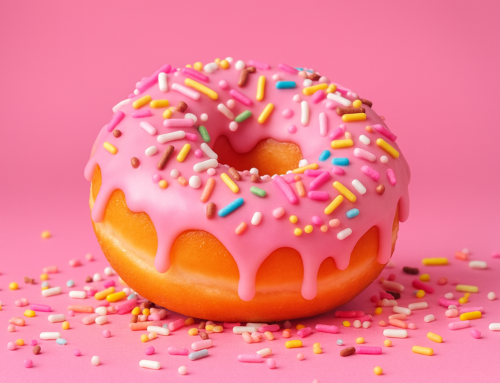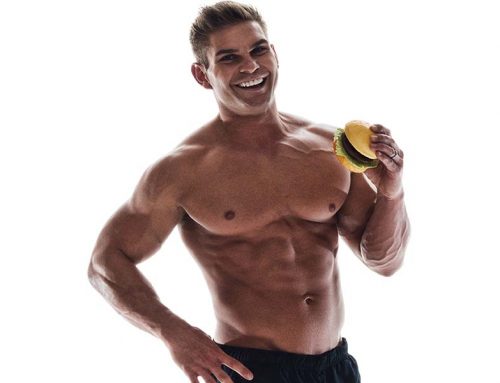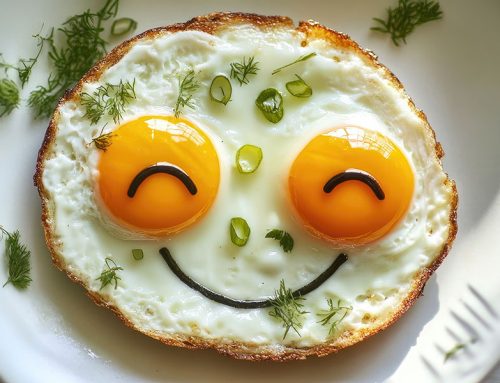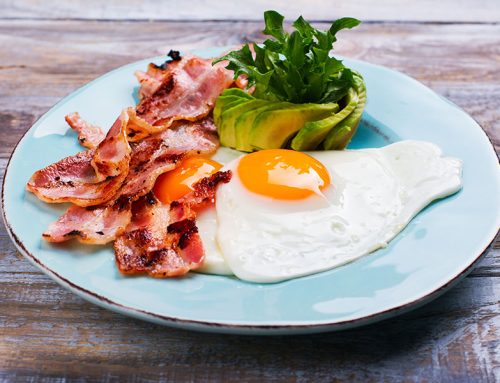So far, at least 7 scientific studies have provided strong evidence that energycontaining beverages (i.e., “liquid calories”) do not properly activate the satiety mechanisms in the body and brain and do not satisfy the appetite as well as food in solid form. Epidemiological research also supports a positive association between calorie-containing beverage consumption and increased body weight or body mass index. New research now suggests that soda may not be the only culprit…
The primary source of liquid calories in the United States Diet is carbohydrate,namely soda. Now running a close second are specialty and dessert coffees. Didyou know that a 16 ounce Frappucino can contain 500 calories or even more!That’s one-third of a typical female’s daily calorie intake while on afat loss program.
A recent study at Purdue University published in the International Journalof Obesity set out to learn even more about this bodyfat – liquid caloriesrelationship.
Researchers compared solid and beverage forms of foods composed primarilyof carbohydrate, fat or protein in order to document the independenteffect of food form in foods with different dominant macronutrient sources.
Based on previous research, some experts have recommended targeting specificbeverages as being “worse” than others. High fructose corn syrup and soda hasbeen singled out the most and you’ve probably seen that yourself in the news.
There’s no question that soda has been on top of the “hit list” for sometime now, by virtue of the amounts and frequency of consumption alone.
However, this recent study says that from a pure energy balance perspective,we should be cautious about ALL liquid calories, not just soda and not justcarbohydrates!
Fruit juice for example, appears to be an obvious improvement over soda, somany people have swapped out their soda for fruit juice. However, whenfruit juice is compared to an equal amount of calories from whole fruit, thewhole fruit satisfies appetite better (largely due to the bulk and fibercontent), and so you tend to eat fewer calories for the day.
[On an interesting side note, soup does not seem to apply; soup has highersatiety value than calorie containing beverages, possibly for mere cognitivereasons.]
If you were to meticulously track your calories from beverages and you madesure that your calories remained the same for the day, whether liquid or solid,there would probably be little or no difference in your body composition.
But that’s not what usually happens in free-living humans. Most people do notaccurately track or report their caloric intake. Our mistake is that we tendto drink calories IN ADDITION TO our usual food intake, not instead of it.
Men are especially guilty of this when they drink alcohol – Men tend to drinkAND eat, while women tend to drink INSTEAD OF eating.
This new research found that with all three macronutrients – protein, carbsor fat – daily calorie intake was significantly greater when the beverageform was consumed as compared to the solid.
Yes, it’s true! Even protein drinks did not satisfy the appetite the waythat protein foods did!
While you would think that protein drinks are purely a good thing, becauseprotein foods have been proven to reduce appetite and increase satiety, ifyou turn a solid protein food into a protein drink, it loses it’s appetitesuppressive properties in the same way that happens when you turn fruitinto fruit juice.
[NOTE: After weight training workouts, liquid nutrition may have benefitsthat outweigh any downside, especially on muscle-gaining programs]
Why do liquid calories fail to elicit the same response as whole foods? reasons include:
- high calorie density
- lower satiety value
- More calories ingested in short period of time
- lower demand for oral processing
- shorter gastrointestinal transit times
- energy in beverages has greater bioaccessibility and bioavailability
- mechanisms may include cognitive, orosensory, digestive, metabolic,endocrine and neural influences (human appetite is a complex thing!!!)
- Last but not least, nowhere in our history have our ancestors had accessto large amounts of liquid calories. Alcohol may have been around as farback as several thousand years BC, but even that is a blip on the evolutionarycalendar of humanity.
As a result, our genetic code has never developed the physiological mechanismsto properly register the caloric content in liquids the way it does when youeat, chew and swallow whole foods.
Bottom line: This study suggests that we shouldn’t just target one typeof liquid calories such as soda. If you’re trying to beat body fat, it’swise to limit all types of liquid calories and eat whole foods as muchas possible.
Start by ditching the soda. Then ditch the high calorie dessert coffees.Then cut back on the alcohol. From there, be cautious even about milk,juice and protein drinks.
Drink water or tea instead, or limited amounts of black coffee – without allthe high calorie extras.
If you do consume any beverages that contain calories, such as proteinshakes, be sure to account for those calories meticulously and be sureyou don’t drink them in addition to your usual food intake, but in placeof an equal amount of food calories.
Remember, those protein shakes you might be drinking are called “meal replacements“not “free calories!”
For many years I have suggested focusing primarily on whole foods ratherthan liquids, even protein shakes. Unlike so many other fat reduction programs, Burn The Fat, Feed The Muscle does not require any kind of liquid meal replacement or protein drinks and our company does not exist to sell supplements; we are here to educate you and millions of others about the realities ofbody fat loss.
We now have even more scientific data that confirms what Burn The Fathas been teaching all along.
I hope you found this helpful. You can learn more about “Burn The Fat” at www.BurnTheFat.com
Train hard and expect success,
Tom Venuto
www.BurnTheFat.com
www.BurnTheFatInnerCircle.com
Reference: Effects of food form on appetite and energy intake in lean and obeseyoung adults. International Journal of Obesity. 2007 Nov (11):1688-95.Mourao DM, Bressan J, Campbell WW, Mattes RD. Department of Foods and Nutrition,Purdue University, West Lafayette, IN 47907-2059, USA.
Related articles:
Liquid Diets Pros and Cons







I’m certainly no poster child for fat loss at this point (yet), but I try to cut corners wherever I can and I concocted a yummy (in my opinion) replacement for soda. Combine freshly squeezed/juiced (organic if you have access and can afford it) fruit…lemon, lime and orange are great…with mineral water. You get the carbonation of soda with the health benefits of fruit. I like freshly squeezed because juicing takes out the pulp, which I happen to love, but juicing also gives you the benefits of the whole fruit, i.e. the rinds and all that stringy white stuff inside are loaded with good healthy stuff for your body. I no longer have any desire whatsoever to turn to soda. My two cents. Thank you.
Thanks for this information – I have found this to be true; but personally need to include soup. I go to the gym in my lunch hour and so lunch at my desk consists of a highish protein soup, I was finding that I was craving something to chew even though I had added fibre powder to the soup(I initially thought it was just the bulk I needed), usually turning to choc as easily available. Having protein and salad veg made a difference – chew factor I’ll call it – and my afternoon crave of choc wasn’t indulged. I now carry a boiled egg for the afternoons when I do have soup.All the best for the book Jay – thanks for continuing the news!
It isn’t the liquid in a liquid diet that makes one fat–it is the simple carbohydrates that make up the main portion of the these diets. ( water isn’t fatting)
Edward wrote: It isnt the liquid diet that makes one fat — it is the simple carbohydrates”Naturally, its not the liquid per se. But its not the simple carbs either. Its the calories. If you control tightly for calories and match solid calories to liquid calories, the result in body composition will likely be the same.In fact, in the context of a medically supervised liquid fast or liquid diet, using liquid could actually be a good way to enforce calorie control. However, that would be assuming that the patients did not compensate by eating more elsewhere during the day.Most people do not control their calories tightly, they are not in an enforced calorie control situation and they terribly understimate their caloric intake, sometimes by as much as 50%. This has been research proven over and over again.The liquids do not activate your body’s satiety mechanisms so we are discussing appetite control here primarily, not whether a particular food, drink or macronutrient makes you fat.We can all agree that sucrose, corn syrup and high fructose corn syrup are undesirable from a health standpoint and have a high energy density which can contribute to caloric surplus.However, this research did not pinpoint “simple carbs” as fattening per se, this research said that ALL liquid calories – not just simple carbs – do not satisfy appetite or activate satiety mechanisms, which is what made this particular study noteworthy.Protein shakes have little to no simple carbs, yet we see the same phenomenon – protein loses its appetite suppressive effect when put into liquid form.Should one be able to express the appropriate dietary restraint so as not to eat more in addition to drinking calories, then the liquid calories will not contribute to gaining body fat.Best regardsTom Venuto
Being an avid Marathon, Ultra-Marathon runner, cyclist, and a triathlete, I can confirm these studies from a practical standpoint. My typical weekday workouts average about 3-4 hours, while my weekend workouts are in the 6-10 hour range, daily. With the massive amounts of calories that I burn, much of my energy source comes from liquid (energy/sports drink, protein/recovery shakes, etc).When I was on Tom’s fat burning program, liquid calories wasn’t an issue and I was successfully able to drop from 40% to 10% bf. Now, being an endurance athlete, one would think that I would still be in a huge calorie deficit based on my training alone, but that is not the case at all.Liquid calories is a necessity for my endurance lifestyle, but it has been to a point where it creates a balance between calories in vs out therefore putting me at a equilibrium state with respect to body fat and weight. Initially, I was puzzled on why I wasn’t continuing to lose body fat, but when I started to keep track of my liquid calories, it was obvious why. For example, a 5-hour bike ride burns roughly 4000-4500 cal. During the 5 hours, I consume about 1500 cal in liquid form, 1000 cal in solid form, and about 1000 cal post workout meal. In addition, I experience increased appetite all throughout the day.I am currently NOT on a fat loss program, therefore I do not care so much about liquid calories and calorie intake in general. My main goal is to improve performance, endurance, speed, etc and hope to go pro in a year or two….But if you ARE on a fat-loss program, liquid calories can be the KEY answer on why you might be on a plateau or otherwise be responsible for weight gain. WATCH OUT for this!!!!!!!
Arkady, thanks for your post. Very important point. Athletes are often in the reverse situation of overweight folks – instead of having a hard time keeping calories in a consistent deficit, they have a difficult time getting enough calories from solid food. In this context, liquid calories are a great way to help meet the high energy demands of endurance sports.
I mostly eat whole food, but I do make various cottage cheese/protein powder shakes… I usually have one of these once a day. I’ve found them to be quite satifying and filling actually. They’ll keep me just as long as a solid food meal of the same calorie content will. Sometimes longer!My husband says that they don’t satisfy him though. So maybe it’s an individual thing? All I know is that I really like doing a shake before I do a long pool session, it digests fast and doesn’t bother me when I get in the water a half hour after drinking it.I do watch calorie intake and have been losing body fat, so I’m not worried over my once a day consumption. Other liquids are water and green, herbal, black teas.
Cynthia, thanks for your comment. Since you mentioned including cottage cheese, a whole food, that brings up another really good point: VISCOCITY and “THE CHEW FACTOR.”Another study I recently looked at showed that drinks which were thicker, ie, they had a greater “viscocity,” had a greater satiety value.this makes perfect sense, as that is one step closer to solid. It also verifies my personal observation about protein powders. i have noticed that straight whey protein in water is very… well, watery. there is no thickness or viscocity to it and therefore it not only leaves me NOT feeling full or satisfied, it actually leaves me hungry and wanting something else. Therefore, when i use whey, its usually not a meal replacement, its in a post workout shake, or i use it in food recipes, for example, i stir whey into my oatmeal.By contrast, I noticed that casein protein powder, the other dairy protein, is much thicker and makes thick shakes that are more satisfying and satiating.I’ve noticed that most of the meal replacement shakes use casein and whey mixes and not just whey by itself. They whey is usually used in the post workout shakes because whey has a faster absorption time. Whey is the fast protein, casein the slow protein.My other observation is that I know two people in particular, one a personal trainer and one a professional bodybuilder, who have these great recipes for super thick shakes with all kinds of whole foods mixed in like oats, flaxseeds, cottage cheese, and all kinds of other stuff that not only makes the shake thicker, but also makes it almost necessary to eat with a spoon or fork – it has a “chew factor.”Based on all the research taken together, it makes a lot of sense – if you use meal replacements – to come up with some thick meal replacement shakes made with whole foods mixed in with protein powders or meal replacements, which have a higher viscocity and chew factor, and therefore, will satisfy your appetite better. These are arguably a better choice from an appetite control perspective than the straight liquid meal replacement drinks you pull out of a cooler at the gym or health food store.If anyone has some good shake recipes that are thick or even have a high “chew factor” feel welcome to post them here, or I will even start a new blog post for that.tom
Hi, keep up with all your preactical info but I read an amazing study that soups keep the body satisfied LONGER than a plate of food! I watched this programme on the BBC & they made 2 groups of people have the same food, only one group had it liquidized & they were remained full longer!! so I am not sure about the soup issue! otherwise, I am well aware that food with all it’s textures & fibre is definitely more satisfying!! I do try to drink loads of water inbetween meals. I add fresh organic lime juice & stevia extract for a delicious limeade drink which satisfies my constant sweet tooth!best wishes, thanxalot for all the good infonancy
Nancy. YES. You are absolutely correct. This present study also mentioned that soup has a higher satiety value and that soup was an exception to the liquid rule. They could not however give an explanation for the mechanism. They suggested soup may be satiating for mere cognitive (mental and emotional) factors.best regards,tom v
I like freezing my shakes and smoothies to create that “chew effect”- of course, I’m also a fan of the little ice crystals that form!Good article Tom, and a great point about using liquid calories as post-workout. Appetite is usually suppressed after a high-intensity workout, so eating is just not something many ppl want to do after that. Drinking those nutrients then becomes important.Pop (soda) isn’t the only culprit in the weight gain issue, and I’m glad someone’s finally done a study to show that.
I agree that some people tend to underestimate the caloric effect of their beverages, but I also agree that “mouthfeel” makes a huge difference. I think ingredients do as well.A decaf “latte”, made with heavy cream instead of milk (and no sugar), will hold me for hours. So will a shake/nog made with coconut milk and egg yolks (and spices, like vanilla, cinnamon and nutmeg, with a little stevia)I think fat content is a factor, at least for some people, in regard to satiety.
Definitely the viscocity (ie “mouthfeel”) is a factor. As for the satiety value of individual macronutrients, that could be another very interesting conversation. The experimental research says that dietary fat is the least satiating, (at least in terms of energy intake), while dietary protein is by far the most satiating (in terms of energy intake).I say “in terms of energy intake”, because in terms of cognitive value (a feeling of emotional satisfaction after a high fat meal), fat may provide that… but its deceiving because a high fat diet can also lead to taking in more energy if you are not very mindful of energy intake for the meal and the rest of the day.In the context of a low carb, higher protein diet, the added dietary fat is probably not a problem, in fact its needed for caloric ballast, among other reasons, but in the context of a mixed diet that contains ample amounts of carbs, the addition of too much dietary fat such as putting heavy cream, coconut milk, etc into coffee beverages would be inviting excess energy intake. As this study indicated, high calorie dessert coffees are a close second behind soda as a source of excess calories in most people’s diets todayBest regards,Tom V.
To thicken my whey protein drink I shake a bit of fiber into it. I like it!